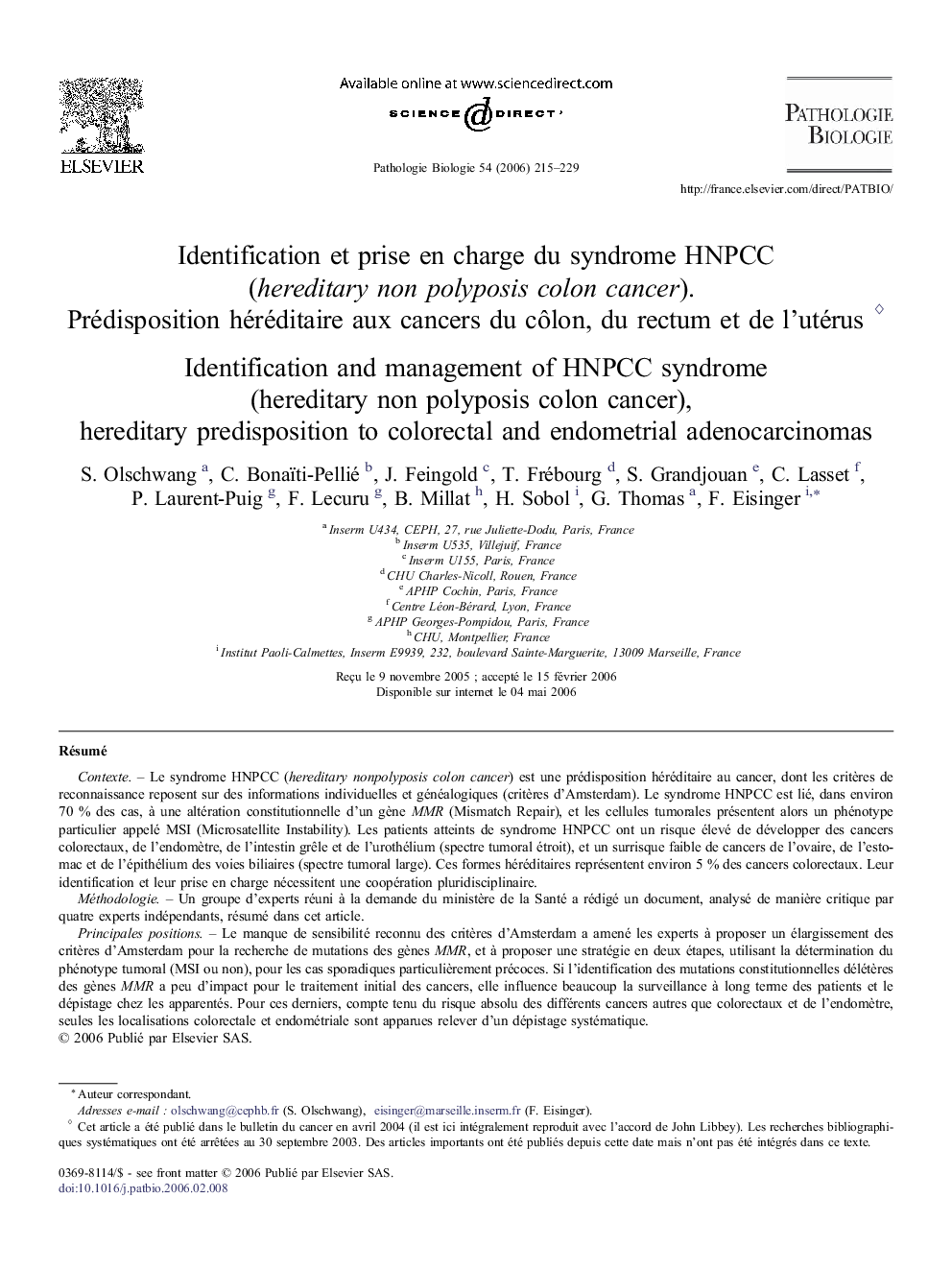| Article ID | Journal | Published Year | Pages | File Type |
|---|---|---|---|---|
| 4136689 | Pathologie Biologie | 2006 | 15 Pages |
Abstract
The lack of sensitivity of Amsterdam criteria in recognizing patients carrying a MMR germline mutation led to an enlargement of these criteria for the recruitment of possible HNPCC patients, and to a 2-steps strategy, asking first for a tumor characterization according to MSI phenotype, especially in case of early-onset sporadic cases. The identification of germline MMR mutations has no major consequence on the cancer treatments, but influences markedly the long-term follow-up and the management of at-risk relatives. Gene carriers will enter a follow-up program regarding their colorectal and endometrial cancer risks, but other organs being at low lifetime risk, no specific surveillance will be proposed.
Related Topics
Health Sciences
Medicine and Dentistry
Pathology and Medical Technology
Authors
S. Olschwang, C. Bonaïti-Pellié, J. Feingold, T. Frébourg, S. Grandjouan, C. Lasset, P. Laurent-Puig, F. Lecuru, B. Millat, H. Sobol, G. Thomas, F. Eisinger,
